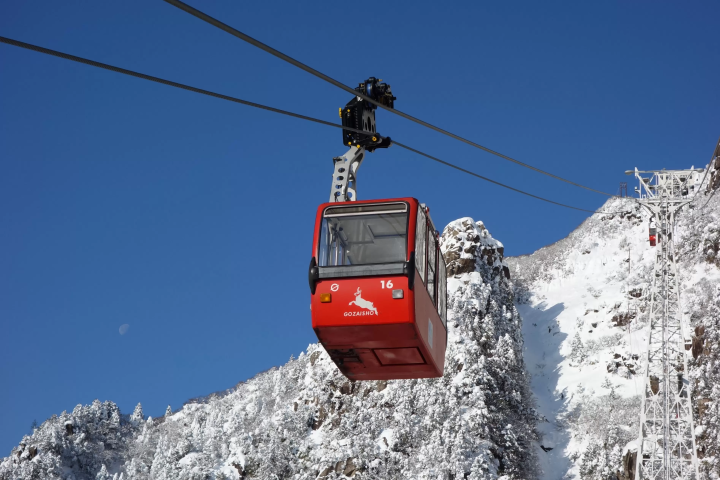A trip to experience the charm of the ancient capital - Excavation experience of the phantom city "Koningu Shrine" held

As a journey to experience the charm of the ancient capital, an excavation experience will be held at the phantom capital "Koningu Shrine". Advance reservations are required, and applications are being accepted for two days: Sunday, January 14, 2024 and Saturday, January 20, 2024.
Through lectures by experts and excavations at real historical sites, we have planned a tour that can only be experienced here, where you can touch actual artifacts excavated from the capital approximately 1,300 years ago.
▶Special site: https://www.knt.co.jp/ec/minamiyamashiro_event/#event4
▶Tour overview page: https://www.knt.co.jp/ec/2024/kunikyu/en/index.html
― Kunikyu Kyojingu ―
Surrounded by mountains on three sides and with a river flowing to the south, it is thought to have been an ideal location for the capital at the time. Otomo Yakamochi, who was later famous for compiling the Manyoshu, was also a young government official at Kyojingu Shrine, and said, ``The capital of Kuni, which is now being built, will be known even if you look at the whispers of the mountains and rivers.'' He wrote the poem, ``No sayake ki mire ube shirasurashi'', and left behind a poem that makes sense for Emperor Shomu to set up the capital. Please experience the still beautiful KUNIKYU.
[Tour overview]
・Tour name:
MINAMIYAMASHIRO VOYAGE, a journey to experience the charm of the ancient capital
~Excavation experience at the phantom capital “KUNIKYU”~
▶Tour overview page: https://www.knt.co.jp/ec/2024/kunikyu/en/index.html
*You can apply from the page above.
・Tour details:
◎Furusato Museum Yamashiro (preliminary classroom lecture/mini tour)
◎Historic site Kyojingu Shrine Ruins (Historical exploration guide, excavation survey experience, lunch, Nara period tile replica making experience)
◎Kaijyuzanji Temple (Visit)
・Travel departure date
Sunday, January 14, 2024 Day trip
Saturday, January 20, 2024 Day trip
・Travel fee (per person) *Children under elementary school age cannot participate
Course ①: January 14th (Sunday) Departure/Arrival from Kyoto Station/Morning excavation/Afternoon sightseeing course
Adult: 13,200 yen (tax included) / Child (elementary school student): 8,800 yen (tax included)
Course ②: January 14th (Sunday) Departure from Kizu Station/Morning sightseeing/afternoon excavation course
Adult: 12,100 yen (tax included) / Child (elementary school student): 7,700 yen (tax included)
Course ③: January 20th (Saturday) Departure/Arrival from Kyoto Station/Morning excavation/Afternoon sightseeing course
Adult: 13,200 yen (tax included) / Child (elementary school student): 8,800 yen (tax included)
Course ④: January 20th (Sat) Departing from Kizu Station/Morning sightseeing/afternoon excavation course
Adult: 12,100 yen (tax included) / Child (elementary school student): 7,700 yen (tax included)
・Tour inquiries:
Kinki Nippon Tourist Co., Ltd. Travel Service Center West Japan
E-mail: kyoto-chiiki@or.knt.co.jp
Event sponsor: Kyoto Yamashiro Regional Promotion Company (Tea no Kyoto DMO)
Trip organizer/operation: Kyoningu Wabisabi Experience Secretariat (Kinki Nippon Tourist Co., Ltd. Kyoto Branch)
Since tea was brought to Japan from China, Kyoto and Minamiyamashiro have improved their tea production technology, and have produced matcha, which is used in tea ceremonies, sencha, which is widely drunk today, and is widely used worldwide as a high-class tea. It produced the well-known “Gyokuro”. This region has a history of producing a wide variety of top-quality teas for about 800 years, leading the development of Japan's tea drinking culture, including the tea ceremony, which is a characteristic Japanese culture, from the production and tea production aspects. It is the only place where representative examples such as unique and beautiful tea plantations, tea wholesalers, and tea festivals, etc., which have been handed down to the present while preserving the scenery of each stage of development, are preserved in excellent condition.
The contents on this page may partially contain automatic translation.































![[Yufuin] From breathtaking views to skin-beautifying hot springs. A variety of day trip hot springs to fully enjoy Yufuin](https://resources.matcha-jp.com/resize/720x2000/2026/01/18-255919.webp)

![[2026] The Matsusaka Lantern Festival will be held to light up the winter night sky!](https://resources.matcha-jp.com/resize/720x2000/2026/01/05-254777.webp)
![[List of Traditional Industry Experiences] Factory tours and craftsmanship experiences in southern Osaka and Wakayama](https://resources.matcha-jp.com/resize/720x2000/2025/11/06-249221.webp)
